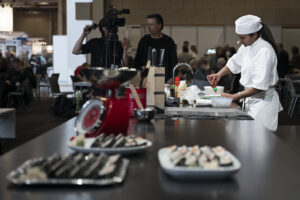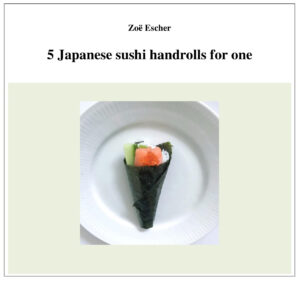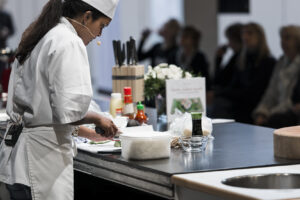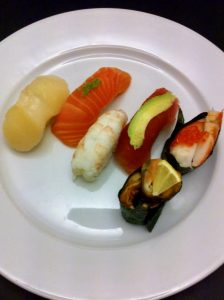
In Europe, many different types of sushi are eaten, but some of the most popular varieties are;
Nigiri Sushi is one of the most common types of sushi in Europe. It consists of a small lump of rice that has been shaped and pressed together, with a slice of raw fish, shellfish or other filling on top. It is often served with wasabi and soy sauce.
Maki sushi is rolled sushi and is popular in Europe. It consists of rice and filling that is rolled in seaweed. There are different variations of maki sushi depending on the filling and the rolling technique.
The California Roll is a western adaptation of sushi that typically contains imitation crab, cucumber and avocado. It is often rolled with rice on the outside.
Although not traditional sushi, sashimi is very popular in Europe. It consists of slices of fresh, raw fish or shellfish served without rice. It is a favorite among those who want a pure fish taste.
In Europe, there is also a growing trend to experiment with fusion sushi, combining Japanese flavors with local ingredients and techniques. This can lead to unique and exciting flavor combinations.
On the Sushi course for beginners, you learn step by step how to make tasty sushi like Japanese sushi chefs in Tokyo.
_
Zoë has held sushi courses and cooking classes for A. P. Moller – Maersk, Hugo Boss Nordic, Novo Nordisk, Novartis, Velux, Gorrissen Federspiel, Beierholm revision, Elbek & Vejrup and many more.







